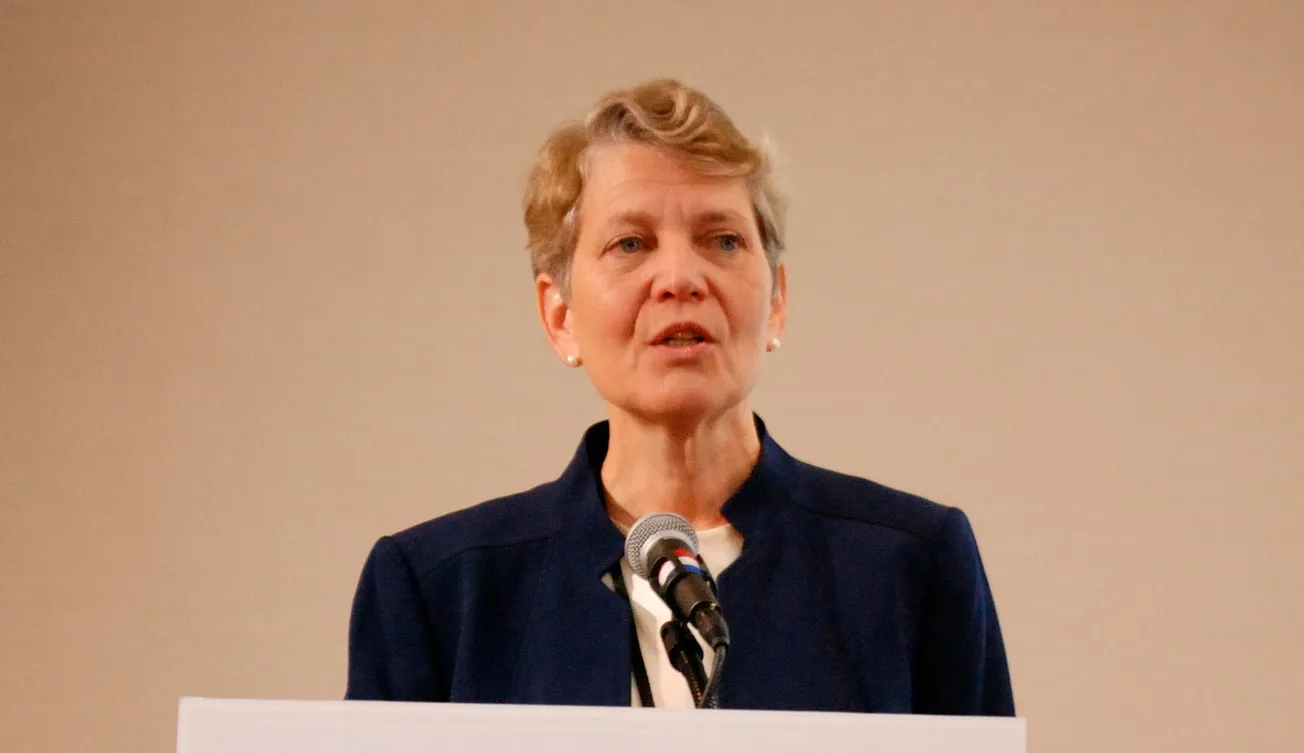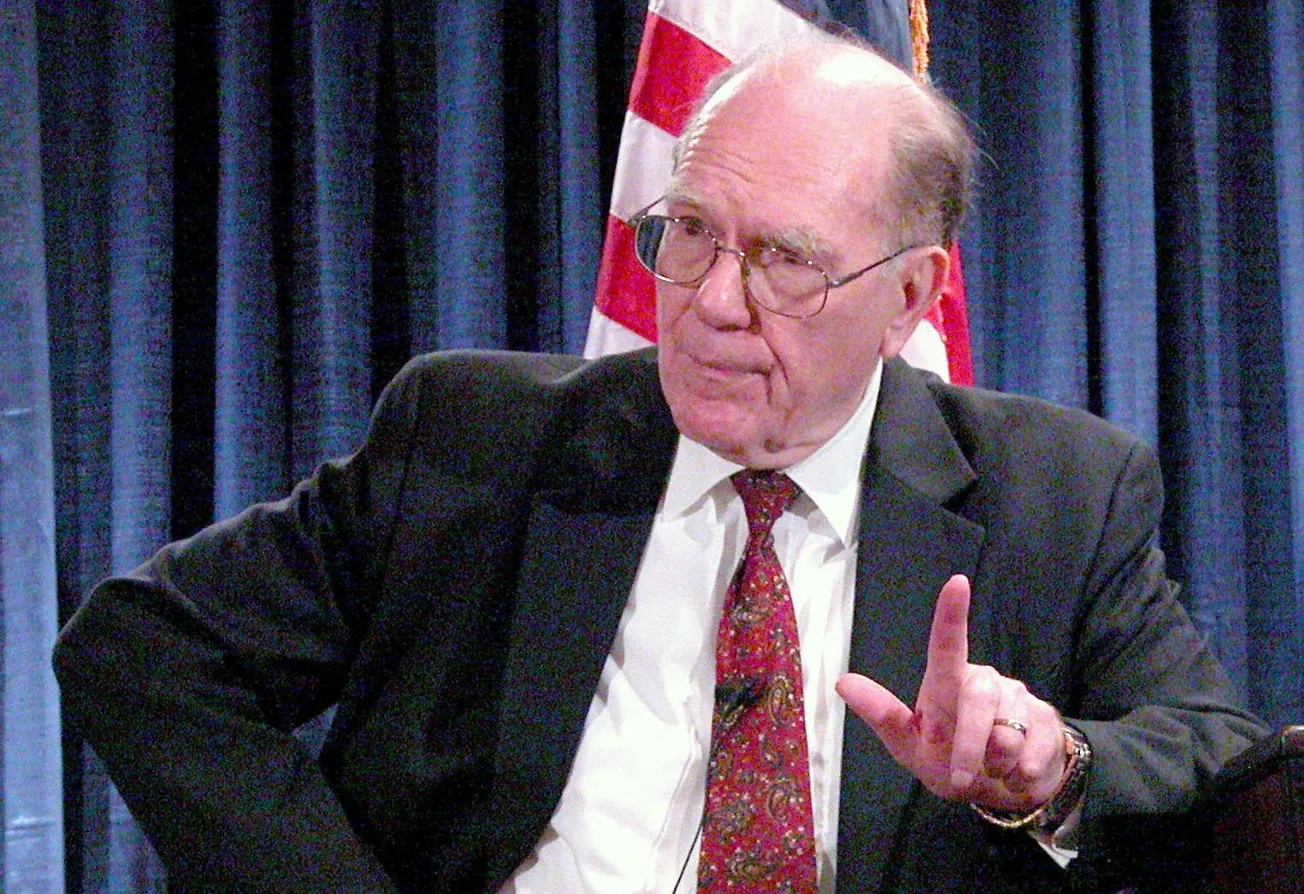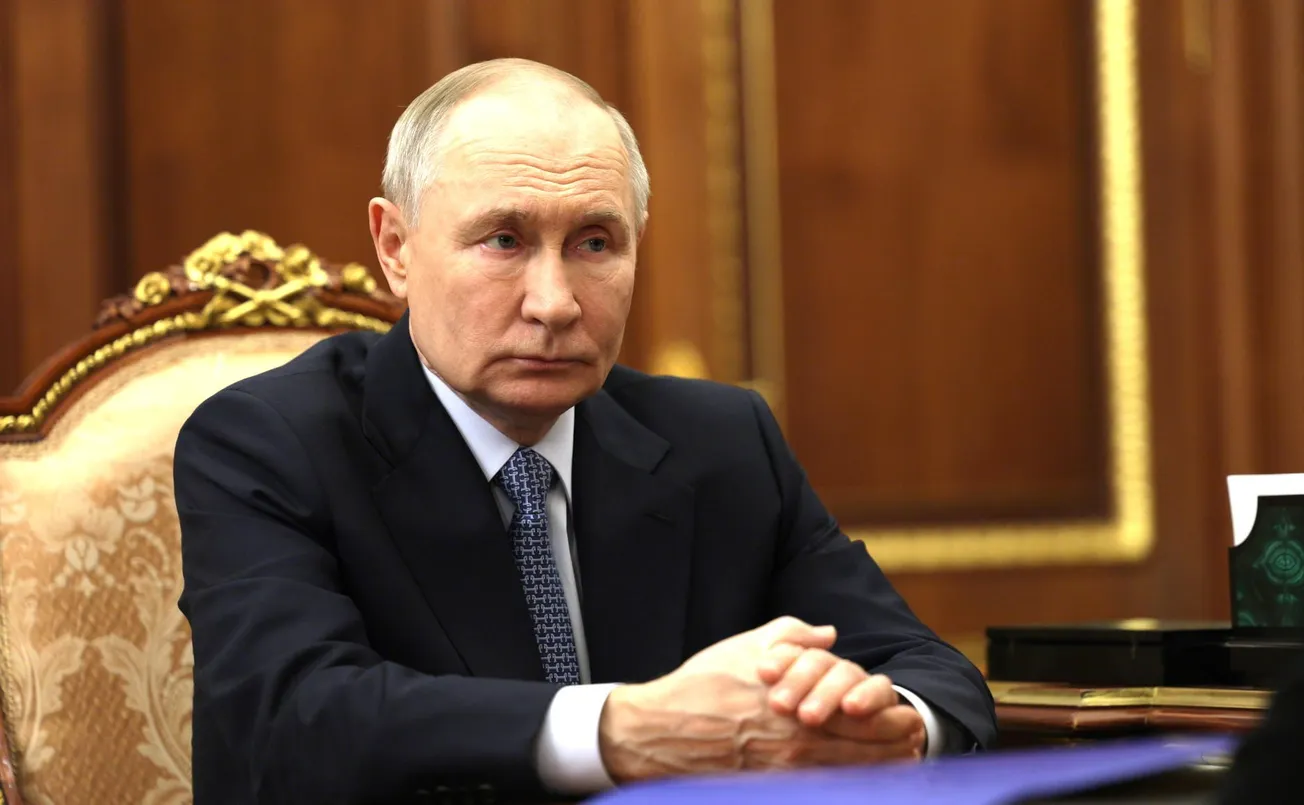The May 25 Sunday morning session of the Schiller Institute May 24-25 conference, “A Beautiful Vision for Humanity in Times of Great Turbulence!” will focus on “Lyndon LaRouche, American Patriot and World Citizen.” The continued successful suppression of the ideas of LaRouche, the economist and statesman—who successfully forecast, on nine occasions, the progress of the physical breakdown crisis of the trans-Atlantic post-Bretton Woods System—must end.
This is no mere moral imperative, though there is a question of simple justice involved, both for LaRouche and for those persecuted and incarcerated with him. His solution-policies, such as the LaRouche Oasis Plan for Southwest Asia, originate from his advanced understanding and improvement of the discipline known as the American System of physical economy. Studying, adopting, and questioning, even disputing the LaRouche proposals, including his unique “development corridor” revolution in physical economy, is key, in order for the United States, in particular, to come to recognize, that the problem it is experiencing with China and Russia is not “communism” or “socialism.”
The problem is that the United States itself no longer understands, accepts, or supports the American System of physical economy. That is the lesson to be taken from the tragicomedy presently unfolding, called “the tariffs and trade” problem. While it is in no way causing the present financial chaos, it is contributing to it, precisely because the present debt system, as it exists, cannot be saved. There is no financial solution conceivable that could solve this problem. The system must be taken through an orderly bankruptcy, while credit must be made available, in the trillions of dollars, and worldwide, for physical production, much of it, indeed, concentrated in the United States, but involving all nations. That matter will be addressed in Panel Three of the Schiller Institute conference, “The LaRouche Program To Create 3 Billion New Productive Jobs in a Generation,” on Saturday, May 24.
There is also some good news. It appears that, while there has not been seen anyone in America, particularly among economists, who has yet mustered the courage to discuss LaRouche’s economic proposals by name, the public re-introduction of Alexander Hamilton’s anti-colonial American System economics into policy-deliberations, is at least beginning in sections of social media. In the course of an exchange on Friday, April 14, among analysts Alexander Mercouris, Glenn Diesen and Alastair Crooke, the commentators were attempting to make sense of the present motivations of the erstwhile “elite” of the trans-Atlantic world. They had discussed the tariff conflict, the prospects for war against Iran and China, the mass destruction of Gaza, and even the possible renewal of war against Russia.
Crooke inquired of Diesen, whom Crooke described as “an economist,” his thoughts. “It’s worth noting that these economic ideas which the Russians are playing with now, a lot of it had a huge origin from the United States,” Diesen said. “Because if you go back to Alexander Hamilton’s time, their main concern was the British economic dominance, that this was a form of free trade imperialism which would prevent the development of their societies, and many other problems. So the whole foundation of this for Alexander Hamilton and Henry Clay to develop this American System, where they would have greater industrial autonomy, their own financial system, that is, with their own national bank, control of their own transportation corridors, a lot of this spread around the world, even Japan. Friedrich List, as you mentioned, was effectively copy-pasting the American System. He wanted to bring it to Germany with the railroads, (a) national bank, … then you had Sergei Witte, from Russia, the finance minister, who translated List’s ideas into pamphlets, and handed them out in Russia.
“And this was of key importance for Russia. They always looked to Sergei Witte, also when they pivoted to Asia, the same ideas were applied. The transportation corridors, industrial autonomy, the financial autonomy. So a lot of this came back to Alexander Hamilton’s liberating America from the British, effectively. But after the Soviet experience, they flirted again with liberalism under Yeltsin, but now they really come back into List. So, if you want to understand about the direction in which both the Russians and the Chinese are going, it has a very strong American origin.”
Diesen is correct. What American economist will join in this discussion with him? Will anyone dare to mention the name Lyndon LaRouche? Who in the vicinity of the White House is prepared to act to recreate “the American System, the whole American System, and nothing but the American System,” as opposed to the debt-ridden casino-plus-gun-shop that is the American economy today?
Once upon a time, America, warts and all, was nonetheless synonymous with productivity and an orientation to production. To return to that requires a cultural shift, not a monetary or fiscal gimmick. America cannot now do this, without being part of an international team, concentrating, as in fact the Trump Administration must be caused to do, on how to create a just security and development architecture between the United States and Russia; the United States and China; and among those three nations and India, and then others. Agreements regarding tariffs, trade, credit for physical production and not speculation, mining, manufacturing, agriculture, advanced high-density energy systems and space, and health and education infrastructure must be adopted worldwide, now. The Four Laws by which this can be accomplished, were outlined by Lyndon LaRouche a decade ago. They will be discussed at the Schiller Conference, embedded in the Helga Zepp-LaRouche “[Ten Principles for a New International Security and Development Architecture](https://schillerinstitute.com/blog/2022/11/30/ten-principles-of-a-new-international-security-and-development-architecture/ ).”





